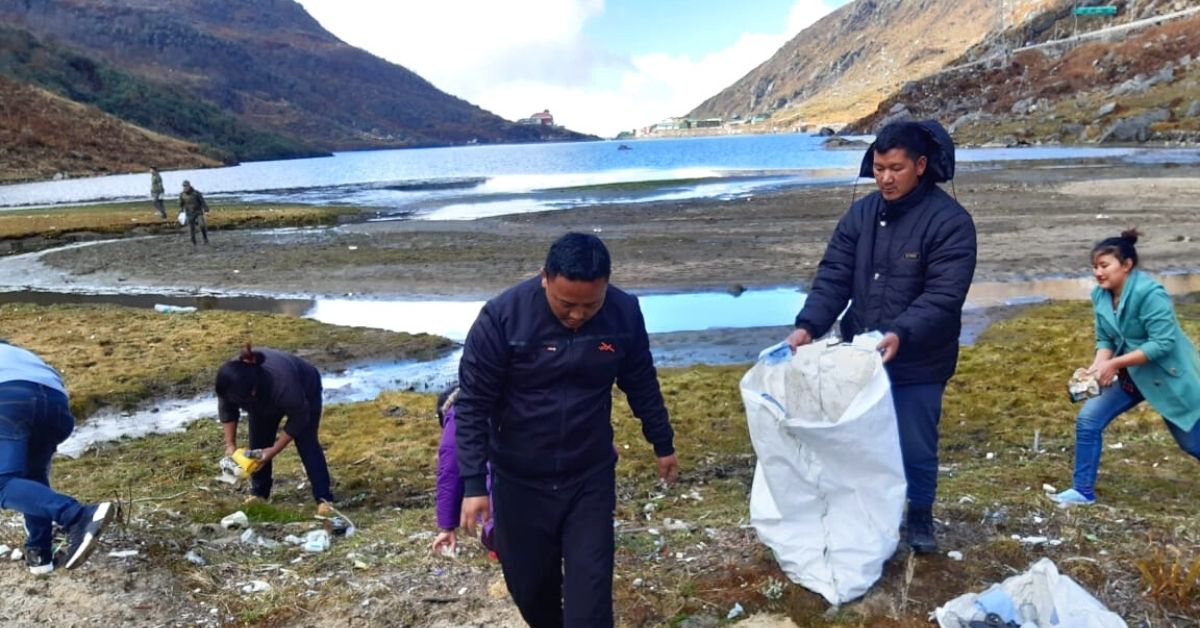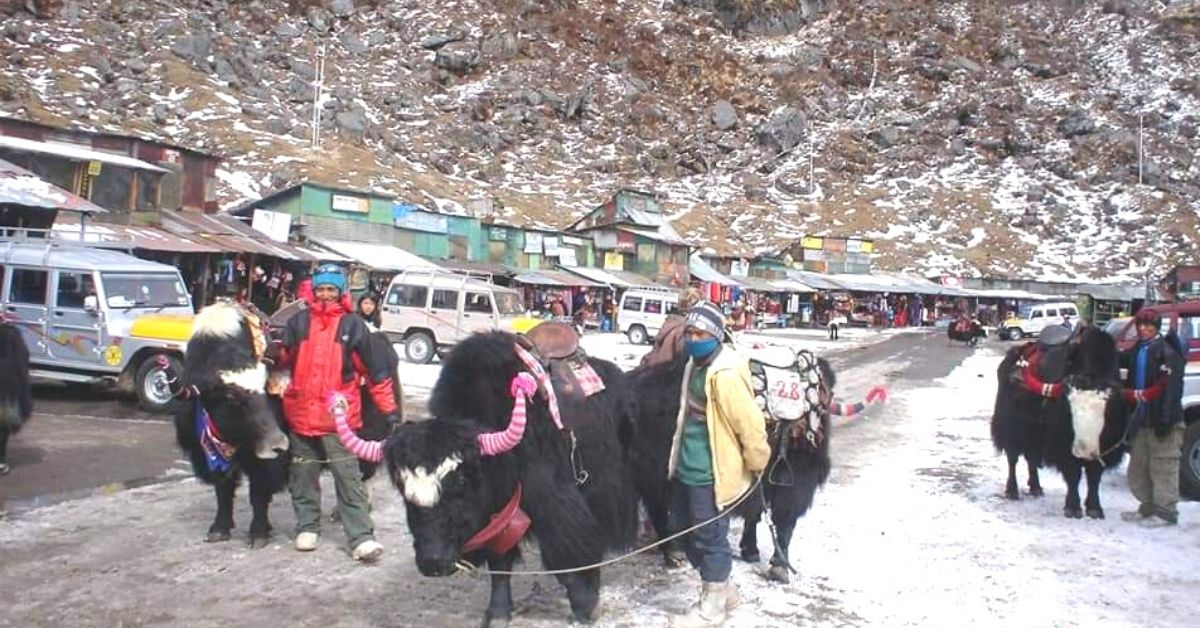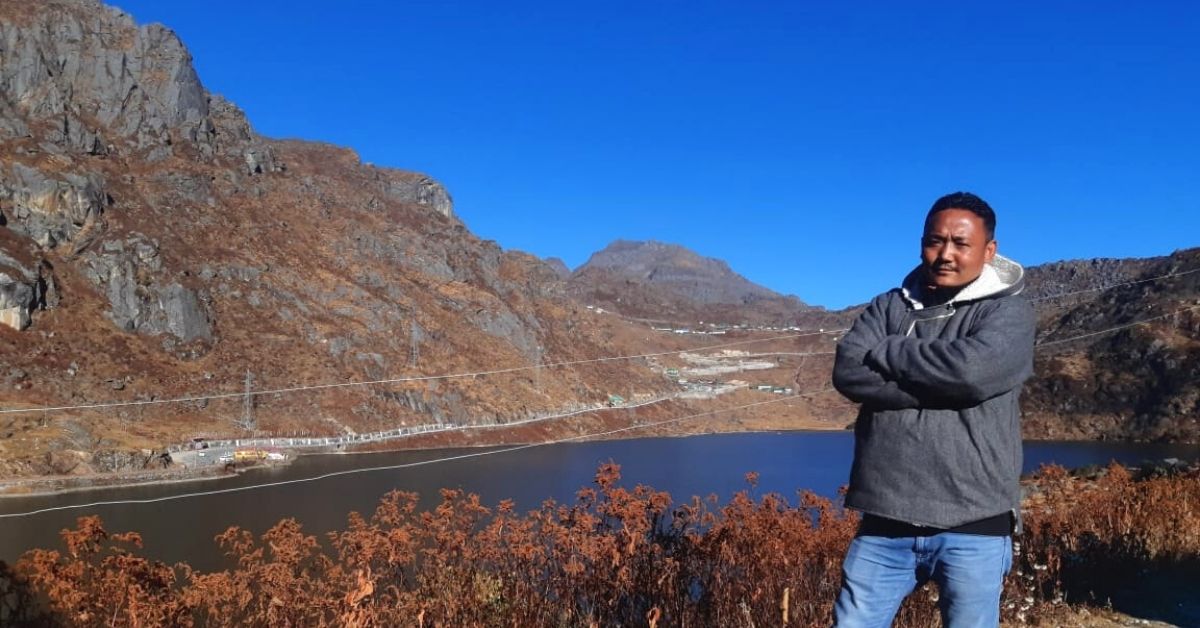India is the highest waste generator in the world, with around 277.1 million tonnes produced every year. The aggressive awareness campaigns run by the government for effective waste management have more or less failed to mitigate the problem. City dwellers struggle to bring much-needed discipline and prevent damaging the environment as most of the waste remains untreated.
However, much can be learned from villagers in Sikkim who, despite living at 12,406 feet with meagre access to a waste treatment facility and recycling units, have succeeded in managing the waste at Tsomgo Lake, thus protecting the biodiversity.
Also known as Changu Lake, the water body is located in the Eastern part of the state on the ancient Silk Route, along the Gangtok-Nathula Highway that connects India and China. The lake is around 1.5 km long and 500 meters wide.
It is also strategically located around 40 km from Gangtok, the state capital, and 16 km from Nathu La, a famous tourist spot. The accessibility to the lake attracts lakhs of tourists each year, making it vulnerable to the environmental impacts of humans. Besides serving as a popular tourist destination, the lake is the only means for around 270 households from three villages Thegu, Changu, and Chipsu, to meet their water requirements.
With the heavy tourist inflow and increasing popularity in the early 2000s, the lake’s health started deteriorating rapidly. Used milk cartons, packets of instant snacks, biscuits wrappers, plastic bottles, tetra packs, sewage, and other waste that had been carelessly tossed away began making its way to the lake and its periphery. No matter which part of the lake and its surrounding areas you’d step on, all you’d find was litter. Moreover, the 180 shops set up by locals in the area for tourists added to the pollution.
However, since 2006, locals have put in steady efforts and implemented stringent measures towards the conservation of the lake. Sangay Lama, a local, herded tourists to imbibe waste management practices and prevented the litter from spoiling the memorable moments captured in a tourist’s camera.
Getting hands dirty

“The oval-shaped lake is surrounded by mountains and laden with snow during winter months. It has a pristine view,” Sangay tells The Better India.
He says that things went out of hand around 2006, and in August the same year, the state government stepped in and issued directives to bring all stakeholders together and chalked out guidelines for the conservation work for the lake. It ordered that a non-government body be formed to work in tandem with agencies working for the cause.
Meanwhile, Sangay had recently completed his graduation in commerce and was working a part-time job in a bank in Gangtok. The village panchayat offered him the opportunity to form the body and take charge as office secretary. The 37-year-old, with representatives from the forest department, World Wide Fund (WWF), environment and wildlife management officials, drivers association, shop owners association and the gram panchayat, formed the Tsomgo Pokhri Sanrakshan Samiti (TPSS), a lake conservation committee.
Sangay says that elders in the village always emphasised on the need to protect the lake and keep it clean. “This lake is the only means of livelihood in an otherwise hostile region. If we failed to protect it, it would have a direct impact on our lives. Taking custody of the lake, TPSS took several measures to clean it and maintain it for years,” he says.
“The TPSS was formed in 2008. The first change that came was moving away from the shops along the borders of the lake. A dedicated space was allotted for all the shops and tourists to access,” he says.
Next, de-siltation helped increase the water carrying capacity of the lake. “We removed around 20 trucks of waste in a week,” he recollects, adding that the activity followed a massive awareness programme for the residents on how to prevent waste from entering the lake.
Setting an example

Sangay says that a waste management system was put in place and is practised religiously even today. “All the waste generated in the area is collected in dedicated bins. It is segregated in these bins, at the source. A truck comes to collect the waste twice a day, once at 8 am and later around 4 pm. There are 52 shops that sell food items, handicrafts and other commercially lucrative items, and each shop generates around 4 kilos of dry and 2 kilos of wet waste. The trucks collect them and dispose at the 32, Martam Dumping and Recovery Centre.
Tourists are charged Rs 10 as ‘Pokhri Sanrakshan Shulk’, or the lake conservation fees. It helps meet the expenses of transporting and managing the waste.
Half of the revenue goes to the government to manage the waste. The remaining is spent by TPSS on activities such as awareness programmes, community work including helping tourists in distress, and covering maintenance costs,” he explains.
He further says that tourists are discouraged from bringing plastic bottles, and the shops avoid selling them. Cup noodles are also prohibited. “An RO water filter system is placed at each shop with steel glasses provided to access the drinking water. The drivers are equally sensitive and provide garbage bags when tourists board the vehicles. All the waste goes in those bags and is not irresponsibly thrown on the ground. These bags are put in the bins at the end of the trip,” Sangay says, adding, “A couple of lake guards also patrol the area through the day and prevent tourists from littering.”
He says that a system needed to be in place because the flow of tourists, registered as three lakh in 2008-09, jumped to over five lakh in 2018-19. However, the COVID-19 crisis has dropped the number back to about two lakh as recorded in 2020.
“Imagine the enormous quantities of waste generated. But it is segregated and managed at each level to dispose at a single point,” the conservator says, adding that all the villagers cooperate and work towards the common cause.
However, Sangay says that it was easier said than done. “It is always difficult to change the people’s mindset. When we began the awareness drives, not many understood their importance. Slowly, some locals started cooperating. As villagers learned how conserving the lake would affect their lives and tourism, they started working towards the same. Initially, they were hesitant about being strict with the tourists, fearing a backlash. But now they insist and are adamant about following discipline,” he adds.
Villagers also faced issues with the Army station close to the lake releasing waste in the water body. A meeting with officials helped resolve the crisis, says Sangay.
Equal stakeholders in protection of environment

Sangay says tourists have become more responsible over the years, and understand the importance of protecting the environment. “They have never been penalised, as there is no tracking mechanism to hold any person accountable. Hence, sensitising them is the only solution. However, they are also the stakeholders and have to play their part. At present, the water in the lake is clean and can even be utilised for drinking without the fear of contamination,” he adds.
The community efforts have helped the TPSS bag the Best Clean Tourist Spot Award for Changu and the Best Clean India Campaign Award conferred by the state tourism department in 2013 and 2019 respectively.
Range forest officer at Kyongnosla Alpine Sanctuary, and member secretary of TPSS, Krishna Dahal, says, “We plan to bring more measures we can take in the annual meet of the stakeholders. The organic waste from Yak still makes its way to the lake. The animal waste is cleaned throughout the day at the moment. But the plan is to move them away from the place for a permanent solution,” he adds. Plans are also under anvil to plant trees in the area, he adds.
Gurudas Nulkar, an environmentalist and Trustee at a Pune-based Ecological Society of India, says the protection of habitats and ecology of the Himalayas is of utmost importance. “The Himalaya region is home to many endemic and rare species of plants, mainly herbs and shrubs. They are specific to that region and found nowhere else on the planet due to their peculiar microclimate and micronutrients,” he says.
Gurudas says that any novel material entering the lake will cause pollution, and disturb the availability of nutrients. Additionally, toxins impact the overall soil. “Glacial lakes like Tsomgo are also a source of water or springs in the downstream regions. Hence, any pollution entering them will contaminate the large geographical area. Hence, the need for protection and conservation,” he adds.
Edited by Divya Sethu
No comments:
Post a Comment